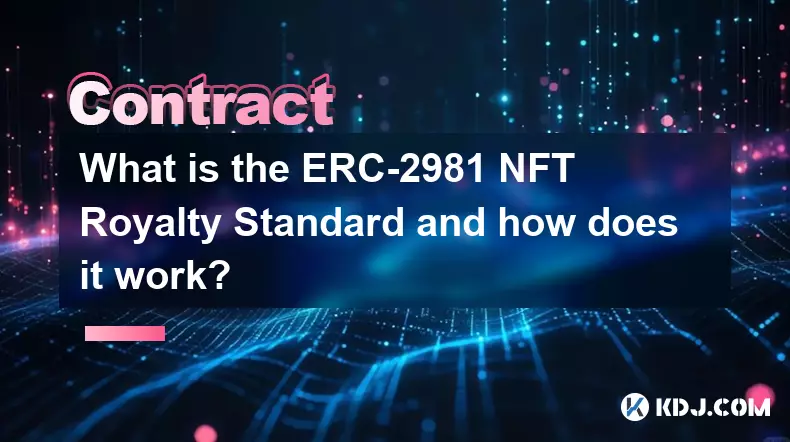-
 bitcoin
bitcoin $95122.959084 USD
-0.06% -
 ethereum
ethereum $3142.532402 USD
-0.28% -
 tether
tether $0.999439 USD
0.01% -
 xrp
xrp $2.209207 USD
-2.80% -
 bnb
bnb $925.395975 USD
0.07% -
 solana
solana $138.662599 USD
-1.73% -
 usd-coin
usd-coin $0.999753 USD
-0.02% -
 tron
tron $0.294100 USD
0.03% -
 dogecoin
dogecoin $0.161321 USD
0.35% -
 cardano
cardano $0.498672 USD
-1.53% -
 hyperliquid
hyperliquid $38.406659 USD
1.34% -
 zcash
zcash $679.663571 USD
5.44% -
 bitcoin-cash
bitcoin-cash $501.381807 USD
3.53% -
 chainlink
chainlink $13.975571 USD
-0.64% -
 unus-sed-leo
unus-sed-leo $9.166130 USD
-0.37%
What are Layer 2 solutions and how do they scale Ethereum?
Layer 2 solutions like rollups scale Ethereum by processing transactions off-chain while inheriting its security, reducing fees and boosting speed for dApps and users.
Nov 15, 2025 at 09:00 pm

Understanding Layer 2 Solutions in the Ethereum Ecosystem
1. Layer 2 solutions are secondary protocols built on top of Ethereum’s main blockchain, designed to enhance transaction speed and reduce costs. These systems operate by processing transactions off the primary chain while still relying on Ethereum for security and finality. By shifting computation and data storage away from the congested base layer, Layer 2s alleviate network bottlenecks.
2. The core idea behind Layer 2 is to bundle multiple transactions into a single submission on the mainnet. This aggregation drastically cuts down the amount of data that needs to be recorded directly on Ethereum, which reduces gas fees and increases throughput. Instead of every action requiring its own block space, dozens or even thousands of interactions can be compressed into one cryptographic proof.
3. Security remains anchored to Ethereum’s mainnet through mechanisms like fraud proofs or validity proofs. Even though execution happens off-chain, malicious activity can be detected and challenged using these verification methods. This ensures trustless operation without compromising decentralization or safety.
4. Different types of Layer 2 technologies have emerged, each with unique approaches to scaling. Among the most prominent are rollups—both optimistic and zk-Rollups—and state channels. Each variant balances trade-offs between speed, cost, complexity, and compatibility with existing smart contracts.
How Rollups Enable Scalability
1. Rollups execute transactions outside Ethereum’s main chain but post transaction data back to Layer 1. This allows them to inherit Ethereum’s security model while achieving higher performance. Two major categories exist: optimistic rollups and zero-knowledge (zk) rollups.
2. Optimistic rollups assume transactions are valid by default and only run computations when a dispute arises. They use fraud proofs to challenge incorrect results during a waiting period. While this introduces some delay in withdrawals, it enables full EVM compatibility, making it easier for developers to migrate dApps.
3. Zk-rollups utilize advanced cryptography to generate succinct proofs verifying batches of transactions. These validity proofs are computationally expensive to create but extremely cheap to verify on-chain. Because every batch comes with mathematical proof of correctness, there is no need for long challenge periods, enabling faster fund withdrawals.
4. Both types significantly increase transaction capacity. For example, zk-rollups can process thousands of transactions per second, far exceeding Ethereum’s current limit of around 15–20 TPS. As adoption grows, more projects are deploying on rollup-based networks like Arbitrum, Optimism, and zkSync Era.
The Role of State Channels and Sidechains
1. State channels allow participants to conduct numerous off-chain transactions while only recording the opening and closing states on the blockchain. This method is ideal for frequent, bilateral interactions such as micropayments or gaming moves. Once opened, the channel permits instant transfers with near-zero fees until settlement occurs on Layer 1.
2. Unlike rollups, state channels require users to be online and actively participating to ensure security. If one party attempts to cheat by broadcasting an outdated state, the other must respond within a defined timeframe. This reliance on active monitoring limits their usability for passive users.
3. Sidechains are independent blockchains interoperable with Ethereum but running under separate consensus rules. They offer high scalability and flexibility but do not inherit Ethereum’s security directly. Projects like Polygon POS fall into this category, providing fast and cheap transactions at the expense of decentralized validation.
4. While sidechains are often grouped with Layer 2 solutions due to their offloading effect, purists argue they should be considered separate because they lack tight coupling with Ethereum’s security model. Their value lies in offering scalable environments suitable for specific applications where absolute decentralization is less critical.
Impact on Decentralized Applications and User Experience
1. Layer 2 adoption has transformed how users interact with DeFi, NFTs, and Web3 platforms. High gas fees that once made small trades impractical have been reduced to fractions of a cent on many rollup networks. This accessibility encourages broader participation, especially among retail investors.
2. Developers benefit from expanded design possibilities. With lower costs and faster confirmations, complex logic and frequent updates become feasible. New financial instruments, real-time games, and social protocols emerge as infrastructure constraints ease.
3. Cross-layer liquidity bridges enable seamless movement of assets between Layer 1 and Layer 2 environments. However, bridging introduces risks related to smart contract exploits and centralized custodians. Several high-profile hacks have targeted bridge contracts, highlighting the importance of robust auditing and decentralized designs.
4. Despite progress, fragmentation remains a challenge. Users must manage multiple wallets, track balances across chains, and understand differing confirmation times. Interoperability protocols aim to simplify navigation, but the ecosystem still lacks a unified experience comparable to traditional web platforms.
Frequently Asked Questions
What is the difference between Layer 2 and Layer 1 blockchains?Layer 1 refers to the base blockchain—Ethereum itself—responsible for consensus, security, and data availability. Layer 2 operates atop Layer 1, handling transaction processing and computation off-chain before settling results back to the mainnet. This separation allows Layer 2 to scale without altering Ethereum’s foundational structure.
Are all Layer 2 solutions equally secure?No. Security varies based on design. Rollups that post data on Ethereum and use fraud or validity proofs are considered highly secure because they rely on Layer 1 for verification. In contrast, sidechains with independent validators offer lower security guarantees since compromise of the sidechain could result in irreversible losses.
Do Layer 2 networks support smart contracts?Yes, many modern Layer 2 platforms fully support smart contracts. Optimism and Arbitrum replicate the Ethereum Virtual Machine (EVM), allowing developers to deploy Solidity-based dApps with minimal changes. ZkSync and StarkNet provide similar capabilities using zk-friendly architectures, though development tools may differ slightly.
Disclaimer:info@kdj.com
The information provided is not trading advice. kdj.com does not assume any responsibility for any investments made based on the information provided in this article. Cryptocurrencies are highly volatile and it is highly recommended that you invest with caution after thorough research!
If you believe that the content used on this website infringes your copyright, please contact us immediately (info@kdj.com) and we will delete it promptly.
- Crypto ETFs: Index Tracking and Market Access for the Savvy Investor
- 2025-11-16 10:05:01
- Wormable npm Packages and Token Stealers: A Deep Dive into Supply Chain Security
- 2025-11-16 10:00:01
- Penny Discontinuation: What It Means for Coin Values and Numismatists
- 2025-11-16 09:55:01
- Penny Discontinuation: Coin Values and the Numismatist's Take
- 2025-11-16 09:50:01
- Crypto's Wild Ride: APEING, BCH, and the Quest for 100x Gains
- 2025-11-16 09:45:02
- Bulls, Volunteers, and Super League: A New Yorker's Take
- 2025-11-16 09:40:01
Related knowledge

What is a Denial of Service (DoS) attack in a smart contract and what are its common forms?
Nov 10,2025 at 05:20am
Understanding Denial of Service in Smart Contracts1. A Denial of Service (DoS) attack in the context of smart contracts refers to a scenario where a m...

What is a cryptographic nonce used for in transaction signing?
Nov 11,2025 at 05:59am
Understanding Cryptographic Nonces in Blockchain Transactions1. A cryptographic nonce is a random or pseudo-random number used only once in the contex...

How does inheritance work in Solidity smart contracts?
Nov 11,2025 at 10:40pm
Inheritance in Solidity: Building Modular Smart Contracts1. Inheritance in Solidity allows one contract to adopt the properties and functions of anoth...

What is the difference between an Externally Owned Account (EOA) and a Contract Account?
Nov 13,2025 at 04:00am
Understanding Externally Owned Accounts (EOA)1. An Externally Owned Account is controlled directly by a private key, which means only the holder of th...

What is the ERC-2981 NFT Royalty Standard and how does it work?
Nov 13,2025 at 05:39am
Understanding the ERC-2981 NFT Royalty Standard1. The ERC-2981 standard is a proposed Ethereum Request for Comment that introduces a royalty mechanism...

What is a sandwich attack in DeFi and how does it exploit transactions?
Nov 15,2025 at 06:39pm
Understanding Sandwich Attacks in Decentralized Finance1. A sandwich attack is a form of front-running and back-running manipulation commonly observed...

What is a Denial of Service (DoS) attack in a smart contract and what are its common forms?
Nov 10,2025 at 05:20am
Understanding Denial of Service in Smart Contracts1. A Denial of Service (DoS) attack in the context of smart contracts refers to a scenario where a m...

What is a cryptographic nonce used for in transaction signing?
Nov 11,2025 at 05:59am
Understanding Cryptographic Nonces in Blockchain Transactions1. A cryptographic nonce is a random or pseudo-random number used only once in the contex...

How does inheritance work in Solidity smart contracts?
Nov 11,2025 at 10:40pm
Inheritance in Solidity: Building Modular Smart Contracts1. Inheritance in Solidity allows one contract to adopt the properties and functions of anoth...

What is the difference between an Externally Owned Account (EOA) and a Contract Account?
Nov 13,2025 at 04:00am
Understanding Externally Owned Accounts (EOA)1. An Externally Owned Account is controlled directly by a private key, which means only the holder of th...

What is the ERC-2981 NFT Royalty Standard and how does it work?
Nov 13,2025 at 05:39am
Understanding the ERC-2981 NFT Royalty Standard1. The ERC-2981 standard is a proposed Ethereum Request for Comment that introduces a royalty mechanism...

What is a sandwich attack in DeFi and how does it exploit transactions?
Nov 15,2025 at 06:39pm
Understanding Sandwich Attacks in Decentralized Finance1. A sandwich attack is a form of front-running and back-running manipulation commonly observed...
See all articles










































































